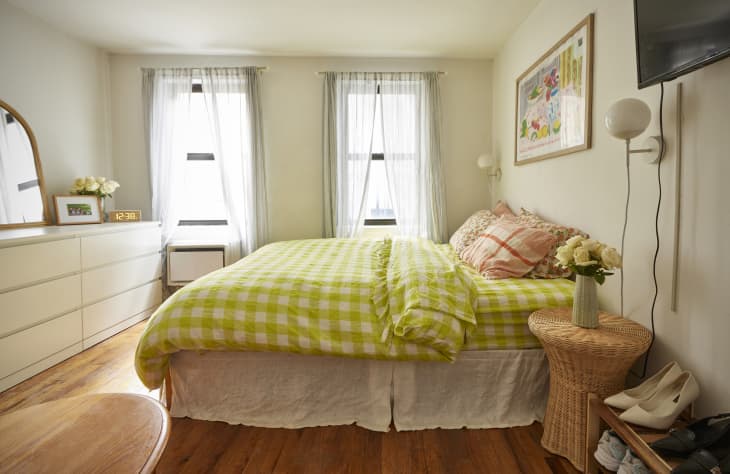Duvet Covers vs. Comforters — How to Know What to Buy for Your Bed

The term “bedding” encompasses all kinds of sleep essentials, from sheets and blankets to duvet covers and comforters. But despite their popularity, there seems to be a lot of confusion about what duvet covers are, how they differ from comforters, and why people like them. Below, you’ll find everything you need to know about duvet covers, including the pros and cons of sleeping with one.
What is a duvet cover?
A duvet cover is a thin, sheet-like piece of fabric. It encloses an insert, otherwise known as a duvet, which is a blanket that usually contains feathers, wool, or synthetic fibers. The purpose of a duvet cover is to protect a duvet from stains and wear, and it’s easier to wash and maintain than a thick duvet itself.
What’s the difference between a duvet cover and a comforter?
A duvet cover is essentially a case for a comforter, whereas a comforter is something that goes inside a duvet cover or stands on its own as a bed topper. A comforter typically layers over a flat sheet, meanwhile a duvet cover can negate the need for a top sheet because it forms a protective layer between the fitted sheet and the duvet or comforter insert.
The pros and cons of having a duvet cover
Duvet covers are a bedding mainstay for some, but aren’t worth the hassle for others. Consider these pros and cons when deciding what to buy for your bed.
Pros
Generally speaking, duvet covers are the following:
- Easy to wash.
- Convenient replacements for top sheets.
- More affordable to replace than an entire quilt or comforter, if you want to refresh your bedding.
Cons
However, duvet covers can also be the following:
- An added expense when compared to a standalone comforter, if you don’t already own an insert.
- Difficult to put on duvets (unless you try the viral duvet cover method).
- Prone to the insert slipping around, unless it has interior ties or fasteners to keep the two pieces connected.
Ultimately, where you stand on duvets vs. comforters comes down to your style, sleeping preferences, laundry situation, etc. But luckily, there are plenty of options in terms of color, style, texture, and material, no matter which you choose. If you’re not sure where to start shopping, Apartment Therapy editors have tested tons of covers to determine the very best ones, and staff and readers alike particularly love Parachute’s Percale Duvet Cover.